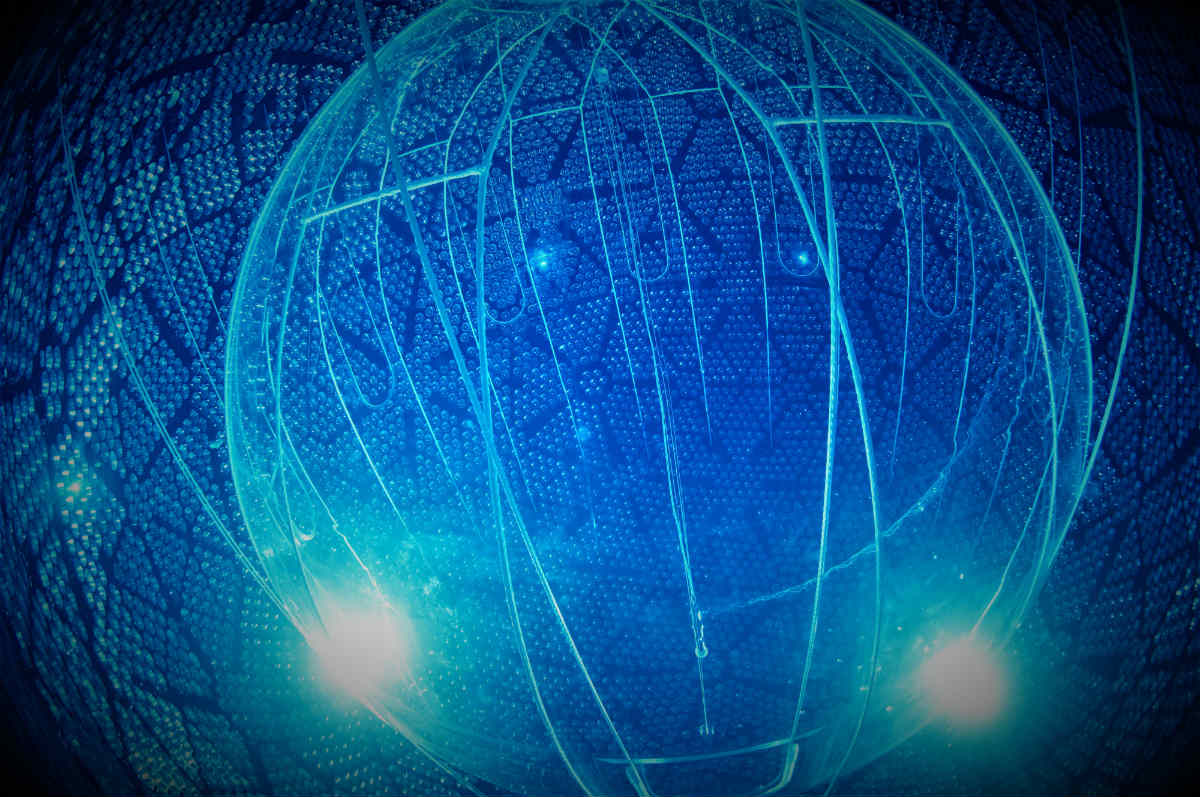
Photograph from the inside of Canada's own SNO+ detector. In the background, light sensors wait for traces of neutrino interactions. They surround a spherical acrylic vessel, where a calibration device has been deployed. The vessel will be filled with liquid scintillator later this year. Credit: SNO+ collaboration
For new assistant professor Juan Pablo Yañez, neutrinos have always held a certain mystique. Since studying abroad in Sweden during his undergraduate years, Yañez has been fascinated with the enigmatic ghost particle. Now, his research at the University of Alberta will hone in on novel ways to study neutrinos.
"These particles remained undiscovered and unimagined until fairly recently. Since we know about them, they have continuously amazed us with their unusual and unexpected properties," said Yañez, the newest addition to the University of Alberta's Department of Physics. "I'd like to understand them more. Why are they so special? What makes them so different?"
Yañez first began working on the IceCube project during his PhD and postdoctoral research in Berlin, Germany. It was then that he was introduced to UAlberta physicist Darren Grant.
In 2016, Yañez came to the University of Alberta as part of the Banting Fellowship, doing research on SNO+. "It's a challenging experiment. We search for a very rare process, which means that we need to carefully investigate all the artifacts that could either mimic or mask a signal," he explained. "But that's also part of what makes it interesting. There are so many things to learn in the process."
His next project? Developing a new instrument, more sensitive and accurate than ever before, to study neutrinos in new and different ways.
"Research on neutrinos relies on detection technology that is almost 100 years old," he explained. "What I've seen more and more is that we end up hitting a wall because the sensors we use limit the information we can extract from the neutrino interactions we record."
Recognizing this need for more precise data, Yañez is going back to basics and focusing his work on the sensors themselves. "It is time to rethink how we observe neutrinos. I believe that, together with the expertise at the Physics Department here, we can make great progress towards new technologies to drastically improve the next generation of neutrino experiments," he added.